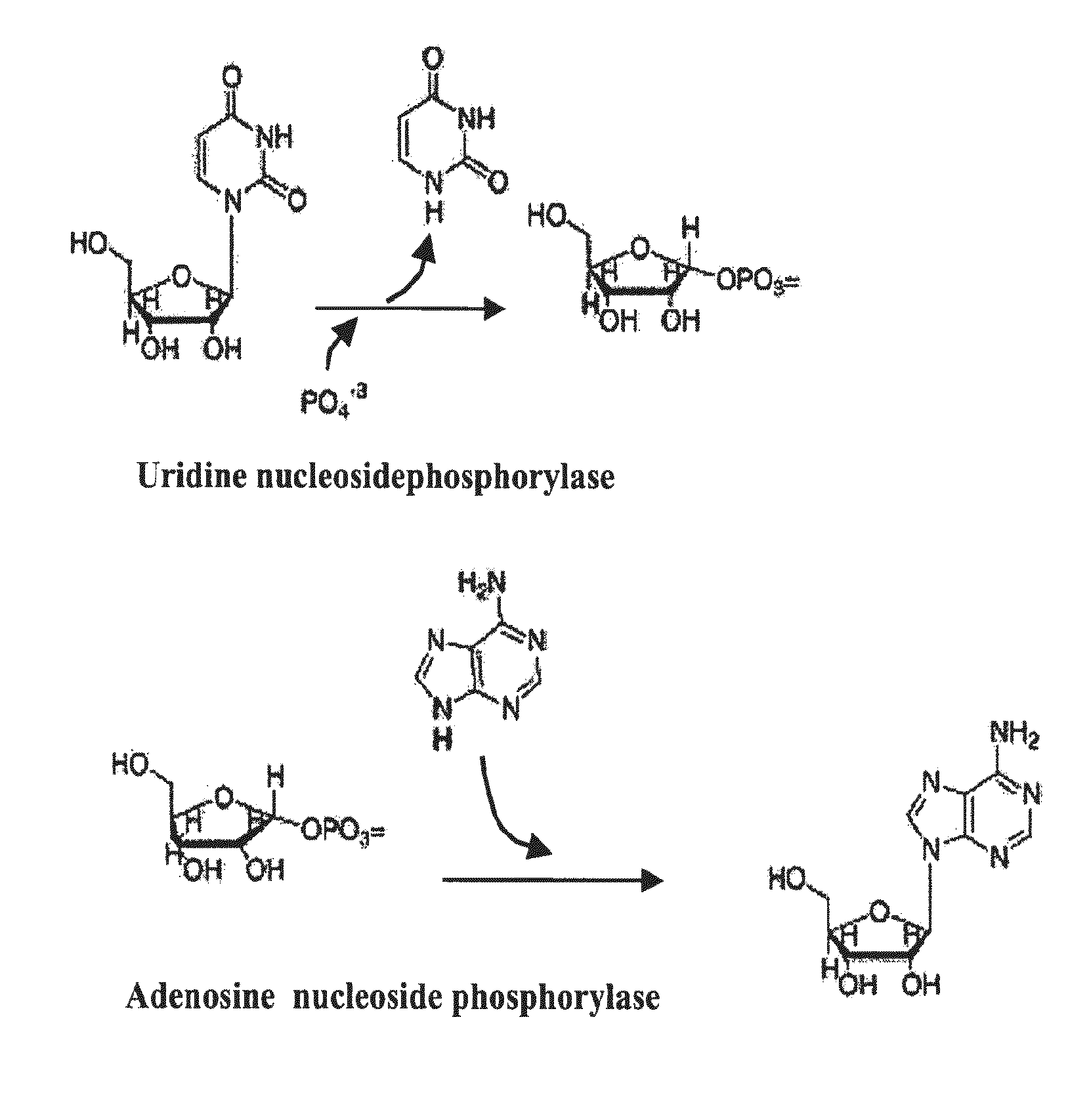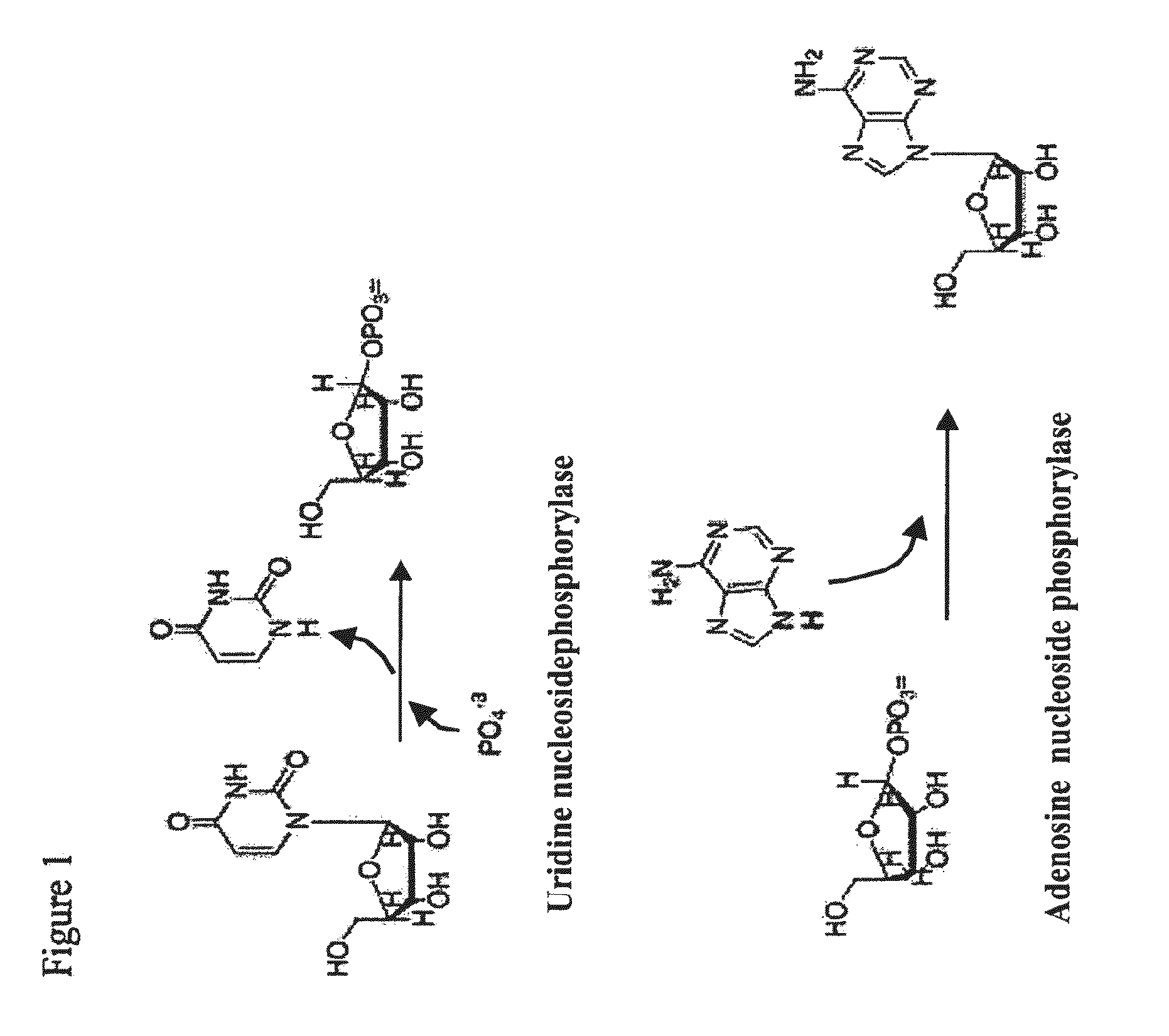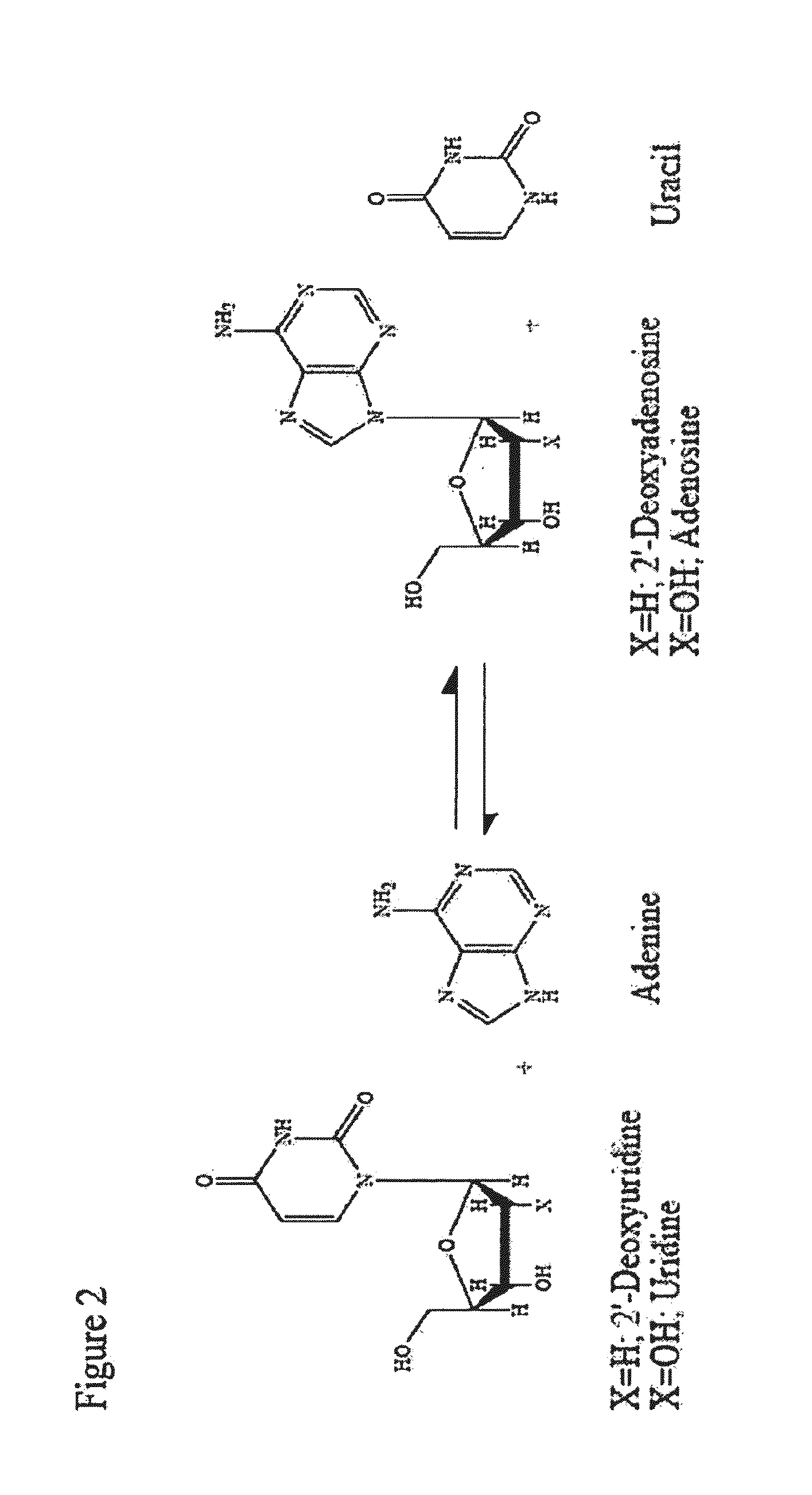Thermostable biocatalyst combination for nucleoside synthesis
a biocatalyst and nucleoside technology, applied in the field of biotechnology, can solve the problems of non-optimal amount or ratio of the enzymatic activity necessary for transglycosylation, use of expensive or polluting reagents, and multi-stage processes that can be time-consuming
- Summary
- Abstract
- Description
- Claims
- Application Information
AI Technical Summary
Benefits of technology
Problems solved by technology
Method used
Image
Examples
example 1
[0066]Construction of the Escherichia coli deoD
[0067]The Purine Nucleoside Phosphorylase (PNPase) of Sulfolobus solfataricus sequence was found in GenBank, with the accession number AE006766. The gene was amplified by PCR, using 2 units of Platinum Pfx enzyme (Invitrogen), 1 mM MgSO4 and 1× enzyme amplification buffer, 200 μM dNTPs and 0.3 μM of each primer, with the oligonucleotides 5′-caccgtgccatttttagaaaatggttcc-3′ (Sulfolobus solfataricus deoD forward; SEQ ID NO. 1) and 5′-aatcagttttaagaatcttaaggtaat-3′ (Sulfolobus solfataricus deoD reverse; SEQ ID NO. 2) from the Sulfolobus solfataricus P2 [15]. The PCR reaction was performed with an initial denaturation step at 94° C. for 30 min, followed by 36 temperature cycles of a denaturation step at 94° C. for 1 min, and an annealing / extension step at 60° C. for 1.5 min and 68° C. for 1 min. After the 36 cycles, the sample was subjected to 68° C. for 10 min and finally at 4° C. PCR product was analyzed by agarose gel electrophoresis, and...
example 2
[0068]Construction of the Escherichia coli udp
[0069]The Pyrimidine Nucleoside Phosphorylase (UPase) of Aeropyrum pernix sequence was found in GenBank with the accession number NC—000854.2. The gene was amplified by PCR, using 2 units of Platinum Pfx enzyme (Invitrogen), 1 mM MgSO4 and 1× enzyme amplification buffer, 200 μM dNTPs and 0.3 μM of each primer, with the oligonucleotides 5′-caccgtggcccgctacgttctcctc-3′ (Aeropyrum pernix udp forward; SEQ ID NO. 3) and 5′-gaattcctatgtgcgtctgcacgccagg-3′ (Aeropyrum pernix reverse; SEQ ID NO. 4) from the Aeropyrum pernix K1 [16]. The PCR reaction was performed with an initial denaturation step at 94° C. for 30 min, followed by 36 temperature cycles of a denaturation step at 94° C. for 1 min, and an annealing / extension step at 60° C. for 1.5 min and 68° C. for 1 min. After the 36 cycles, the sample was subjected to 68° C. for 10 min and finally at 4° C. PCR product was analyzed by agarose gel electrophoresis, and the DNA band was purified from ...
example 3
[0070]Cloning into pET102 / D-TOPO® Vector and Cells Transformation
[0071]The DNA fragments containing the Aeropyrum pernix udp gene sequence and Sulfolobus sulfactaricus deoD gene sequence were cloned into pET102 / D-TOPO® vector (pET102 Directional TOPO® Expression Kit, Invitrogen) that comprises a pBR322ori for plasmid replication, ampicillin resistance gene, T7 promoter that permits binding of T7 RNA polymerase, lac operator that permits inhibition of expression when isopropylthiogalactopyranoside (IPTG) is not present, a ribosome binding site for translation of RNA, a His-patch-thioredoxin for increasing the solubility of the fusion protein, and a polyhistidine tag (6× His) for detection and purification of the fusion protein (FIG. 3). The vector was introduced by thermal shock into Escherichia coli BL21 (pET102 Directional TOPO® Expression Kit, Invitrogen), a commercial strain that is used for regulated expression of heterologous genes. It comprises the gene encoding the T7 RNA pol...
PUM
| Property | Measurement | Unit |
|---|---|---|
| temperatures | aaaaa | aaaaa |
| temperatures | aaaaa | aaaaa |
| temperature | aaaaa | aaaaa |
Abstract
Description
Claims
Application Information
 Login to View More
Login to View More - R&D
- Intellectual Property
- Life Sciences
- Materials
- Tech Scout
- Unparalleled Data Quality
- Higher Quality Content
- 60% Fewer Hallucinations
Browse by: Latest US Patents, China's latest patents, Technical Efficacy Thesaurus, Application Domain, Technology Topic, Popular Technical Reports.
© 2025 PatSnap. All rights reserved.Legal|Privacy policy|Modern Slavery Act Transparency Statement|Sitemap|About US| Contact US: help@patsnap.com



